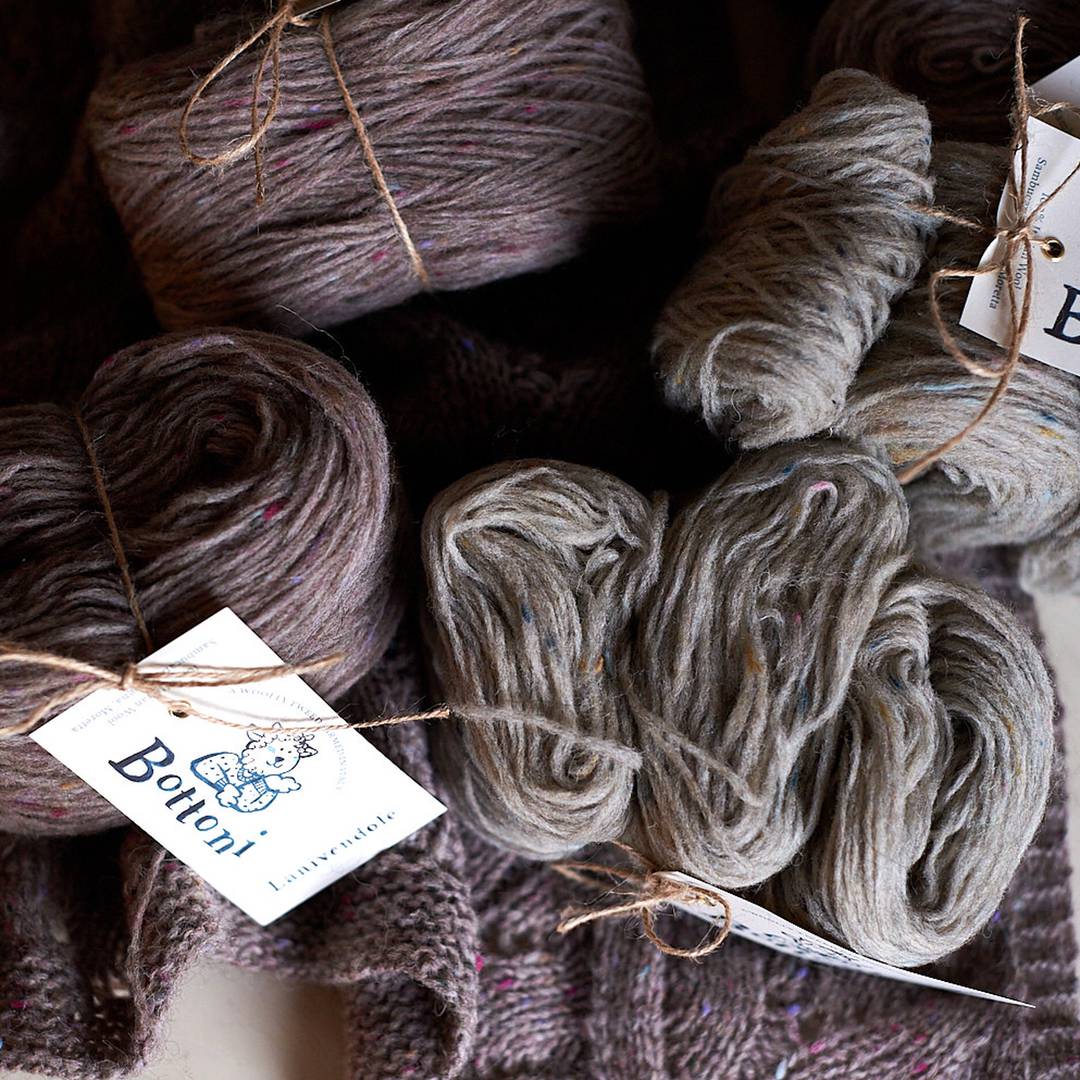
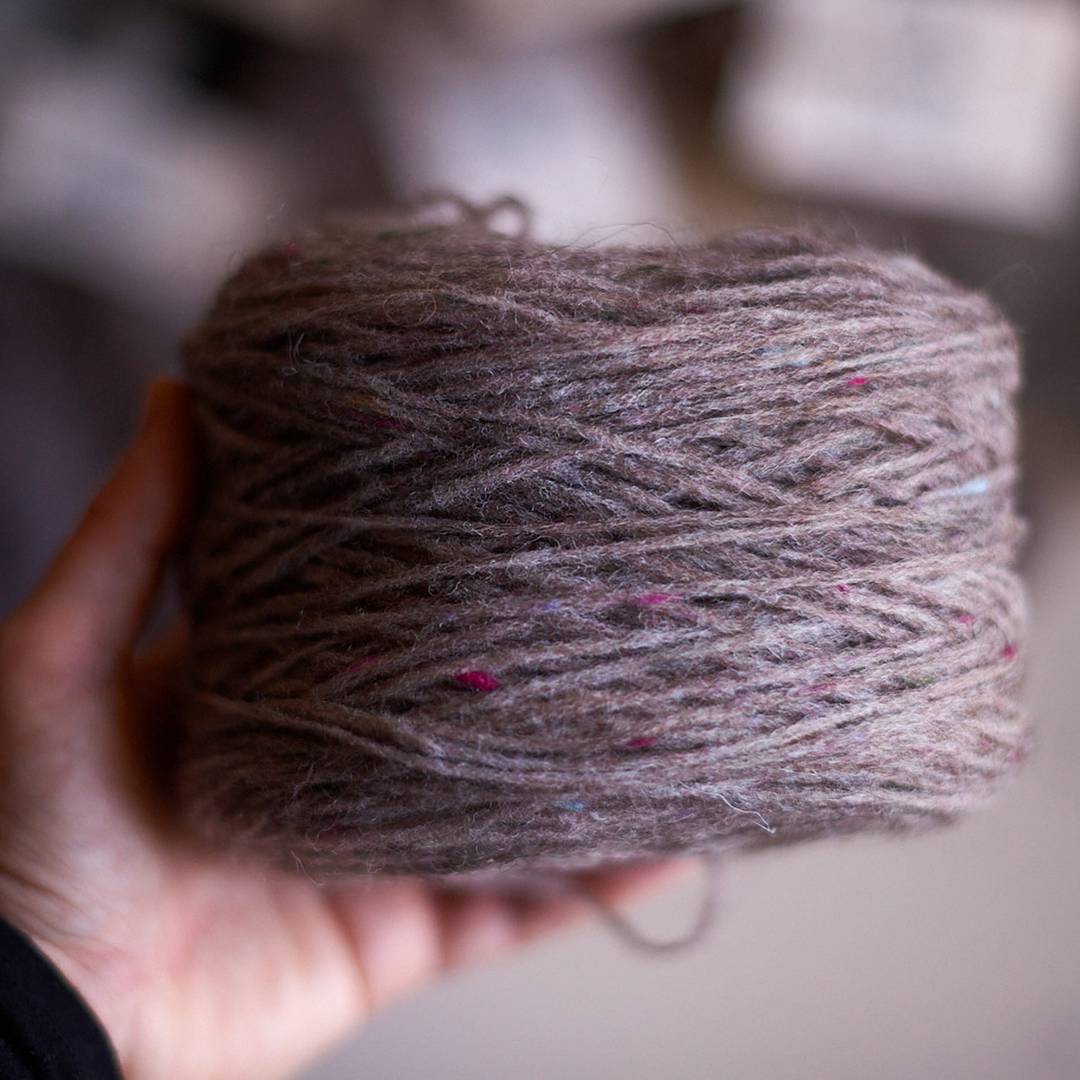
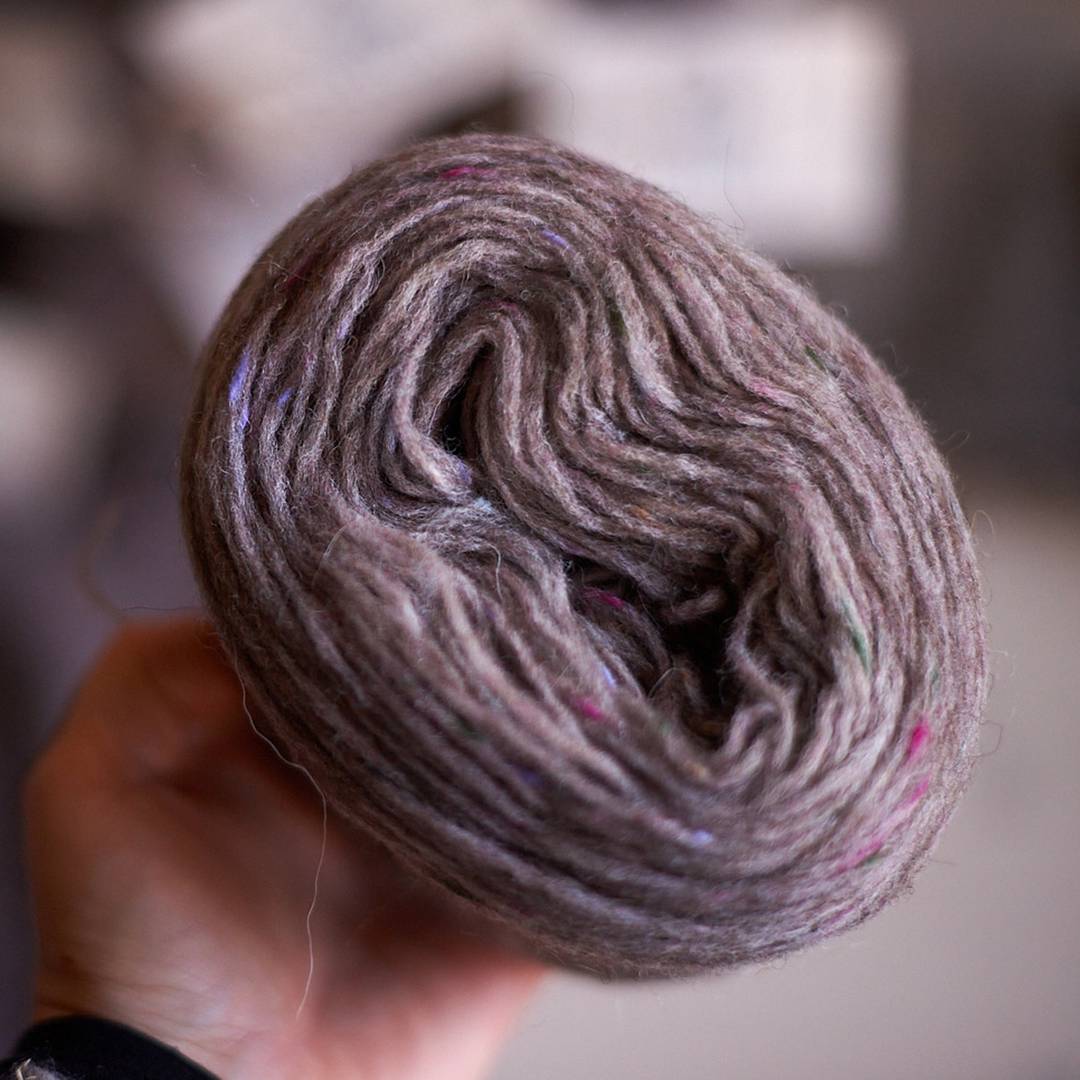
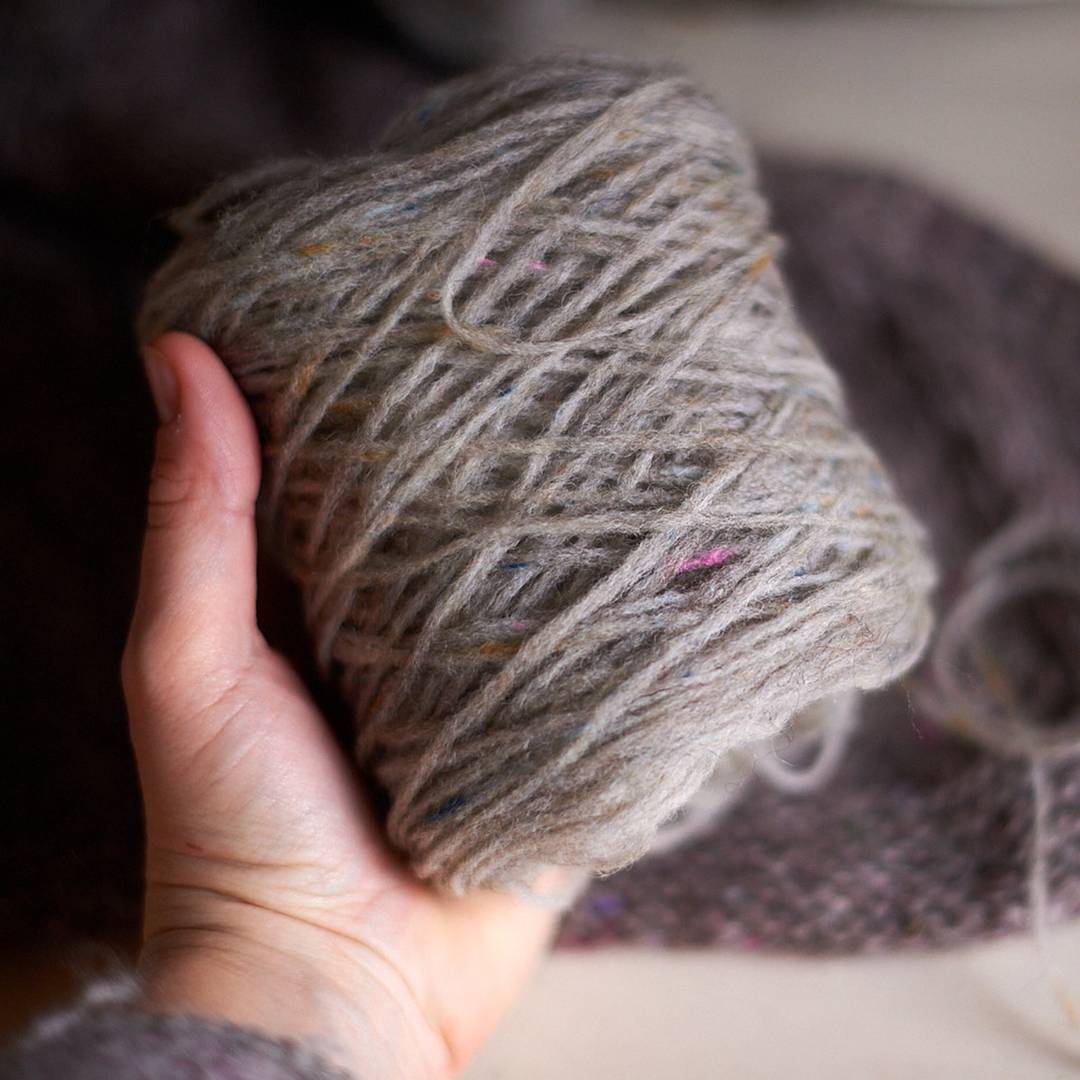
€9.83
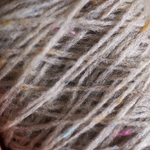
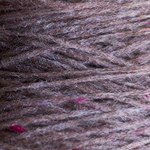
When we visited the mill in Biella to check on Bottoni production we saw these beautiful cakes... they were on the machine ready to be twisted into threads to later become a proper yarn.
Of course as soon as we saw these fluffy colourful cakes we were full of surprise realising they were cakes of what it's usually called unspun yarn so we borrowed a couple to take home with us and test.
We were way too much excited not to make a tiny little batch of Bottoni Unspun for you all!
Each listing is for 100g of unspun
For threads of this kind it's hard to define the exact yardage of each cake, but regarding thickness a single thread can be knitted as an average fingering weight yarn, while if doubled it can be knitted as a DK/worsted weight yarn.
Needle range:
Composition:
100% wool blended from Brogna, Sambucana and Moretta flocks.
We made a bundle of patterns on Ravelry, inspired by this base:
We recommend that all yarn is washed by hand. This ensures it’ll be beautiful for as long as possible and will wear well. When you’ve finished your project, dunk it in a sink of lukewarm water – with a no rinse wool wash if that takes your fancy, leave it to saturate for a while, then roll it up in a towel to squeeze out excess water and pin out flat to dry.
As with all textiles and all yarn, sometimes colour can come out. It can be caused by a difference in the water ph used to wash the item, detergents, or an over-saturation of dye that hasn’t quite finished rinsing out.
All of our hand dyed yarn is rinsed by hand in the sink, and each batch is soaked, then individual skeins are rinsed to make sure no colour bleeds. This isn’t foolproof though, and occasionally skeins in darker colours can bleed a little. In case it happens simply put your yarn or finished item in a pan (that you won’t use for food), add water and a generous glug or vinegar or citric acid, and then slowly bring up to heat. It should be simmering but not boiling. Then turn the heat off, put a lid on the pan, and leave it – ideally overnight. You should find that the water is now clear, and all that remains is to rinse your yarn. If the water isn’t quite clear, rinse it anyway – much like with hair dye, there can be excess dye which needs to run off.